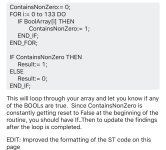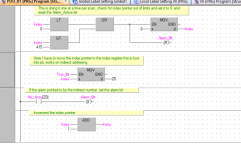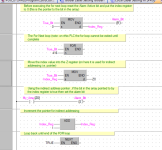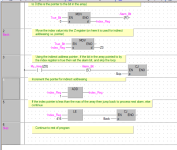TrashKetchum
Member
Im pretty new to software and could use some advice please,
I am trying to fire an output if any alarms on my software are on.
I have a boolean array of ALARMS[416]. If any of these are 1 i need my output to also be 1.
If anyone has any advice, thanks in advance
I am trying to fire an output if any alarms on my software are on.
I have a boolean array of ALARMS[416]. If any of these are 1 i need my output to also be 1.
If anyone has any advice, thanks in advance









